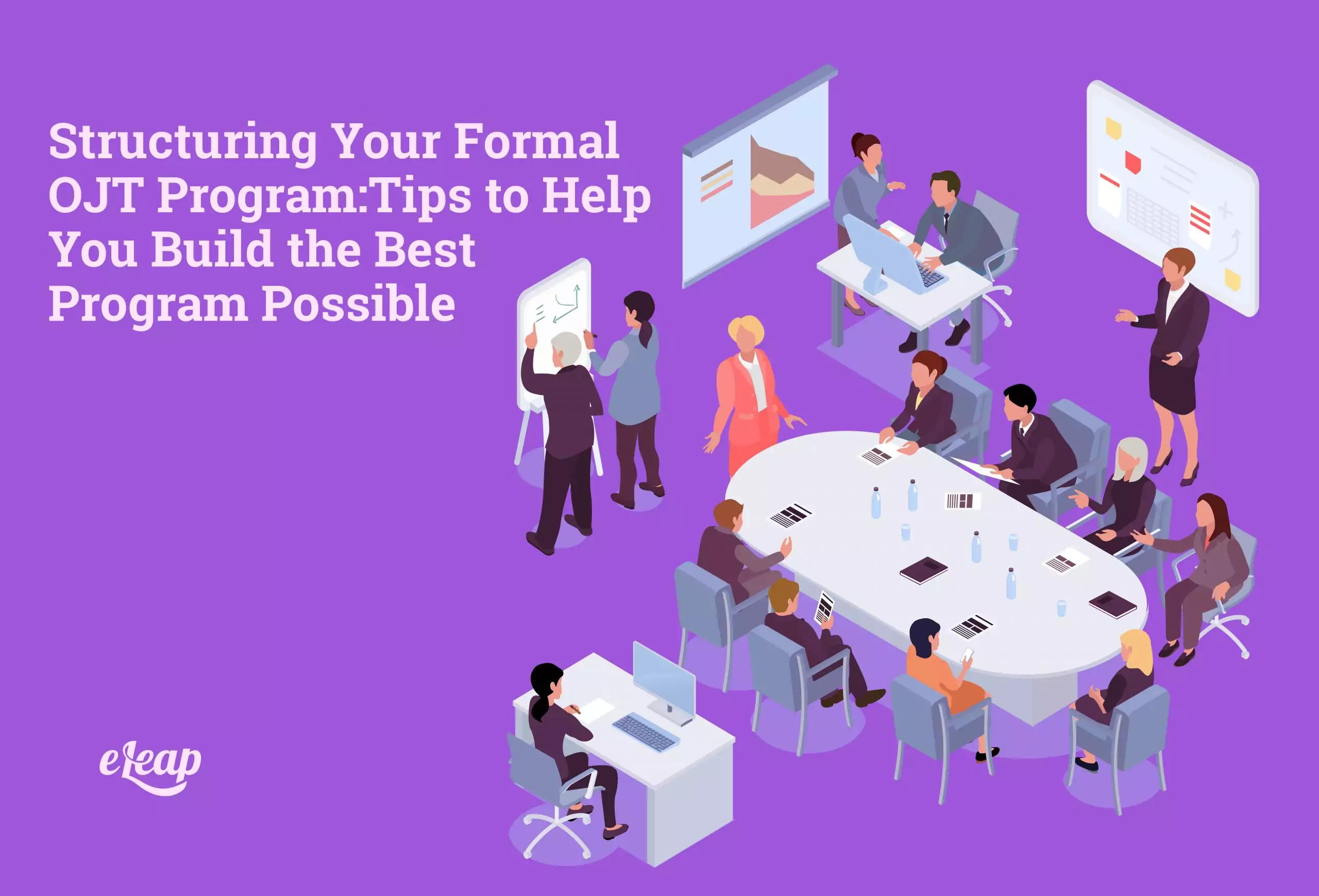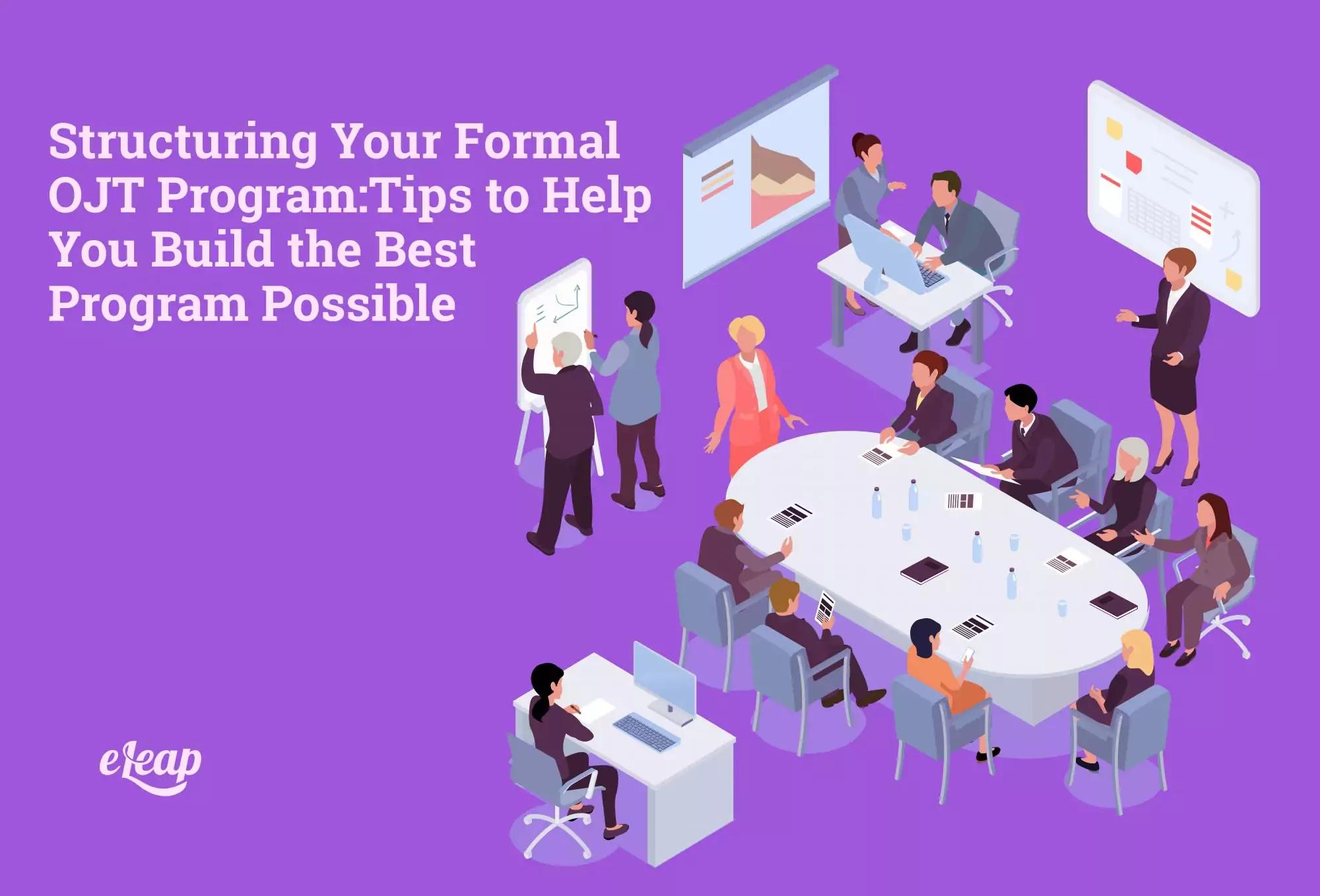Structuring Your Formal OJT Program: Tips to Help You Build the Best Program Possible

OJT Program (On-the-job training) has played a vital role in the workplace for a very long time. It remains one of the most common means of upskilling employees, retraining workers, and onboarding new hires. However, informal programs can only offer so much value.
Formal OJT programs deliver better value, replicability, and efficiency. However, to see those benefits, your program must be structured correctly. The wrong structure could mean failure to imbue the desired skills, time and cost overruns, and a loss of efficiency.
Unfortunately, many organizations lack an understanding of how to structure their formal OJT program correctly. This post will provide important tips to help ensure the optimum structure and that you can see the results you require.

Choosing and Training Your Coaches
Your coaches are the bedrock on which your OJT program is built. Without the right coaches, your program will not be successful no matter how much support it might have from upper leadership. The challenge here is finding the right coaches and then providing them with the training necessary (train the trainer).
This flies in the face of how informal OJT programs work. In those situations, new hires generally shadow a more experienced worker who introduces them to the workplace, their duties, and their coworkers. In a formal OJT program, that all goes out the window. The coach will provide specific training, administer quizzes and tests to assess learning, and take other steps to ensure trainee success.
So, who makes a good fit for the role of the coach? Mastery of the skills/knowledge that the trainee will need is a good place to start. However, there is more required. A good coach is more than a subject matter expert. They also need:
- Good interpersonal skills
- Good communication skills
- A deep understanding of the organization and its culture
- The desire and ability to teach others
The best recommendation here is to scour departments and identify individuals with the above-listed characteristics, even if they are not SMEs yet. Then, once you have found people who can coach well, provide them with the training necessary so that they can pass their skills along to others. This ensures that you have the right people in place first.
Working with Supervisors
Because OJT occurs during the course of normal business, you will need to work with department and team supervisors. Many things must be scheduled and care will need to be exercised to minimize OJT’s disruption of the team’s normal activities. Supervisors can be instrumental in other aspects of the OJT program, too.
- Scheduling: Some teams experience periods when OJT is impossible. These “peak” hours or days should be avoided. Work with supervisors to determine when OJT will have the least impact on team performance.
- People: Finding the right coaches can be challenging. Supervisors and team leaders know their people better than you, so loop them in on the mission. Get their recommendation on who might be a good fit for the position of coach.
- Training Specifics: Chances are good you have a high-level job description on which you want to base the OJT. This can work in some cases, but it is best to work with supervisors to ensure that you’re able to cover the training specifics. Remember that job descriptions are often barebones and rarely cover everything that an employee will be required to do on the job.
Developing Training Materials
A formal OJT program requires formalized training materials. It is not enough to allow trainees to shadow other employees, although that may be included. Instead, develop formal training materials that can be used to supplement shadowing. These can be added to your learning management system and used as introductory elements, as supporting elements, or to conclude training and refresh key points in the trainee’s mind.
In some instances, it will be necessary to ensure that any training materials meet industry or government regulations. In these cases, work with a subject matter expert to create compliant materials or source ready-made training materials from a course developer. Ensure that you have the optimum schedule for material completion and that it dovetails correctly with hands-on training in the workplace.
For some positions, face-to-face training with mentors or other experts may be preferred to text or video-based training materials. These can take the form of traditional mentorship programs, as modified apprenticeship programs, or even webinars and the like. Explore your options and create a range of materials well-suited to each position’s unique needs and challenges, but keep in mind the differences in each learner and provide flexibility to speak to those.
Determining Trainee Prerequisites
In many cases, formal OJT builds on existing knowledge and skills. These prerequisites should be fully understood and documents. In most cases, they should be spelled out in the job description – providing each trainee with a full understanding of the skills they are expected to have when onboarding for the position.
This serves a couple of purposes. First, it ensures that hirers and trainers understand the knowledge base that each employee should have. Second, it ensures that trainees have the opportunity to build their knowledge before applying or moving to a new position.
Evaluating OJT Program Success
As a final tip, ensure that you regularly evaluate the success of your OJT program. Doing so can be challenging, but it is possible. During the evaluation, answer a few important questions, including the following:
- Are trainers confident that trainees have the knowledge and skill required after completing OJT?
- Is satisfaction of the supervisors meeting with the level of knowledge and performance of trainees after completing OJT?
- Do trainees feel prepared and ready for their role after completing OJT?
Tracking OJT success is important to ensure an accurate evaluation. The right learning management system (LMS) can provide critical tracking capabilities. At eLeaP, we’ve embedded an OJT tracking module that helps you connect the dots, evaluate your program, and ensure that your trainees are developing the knowledge and skills they need for success.